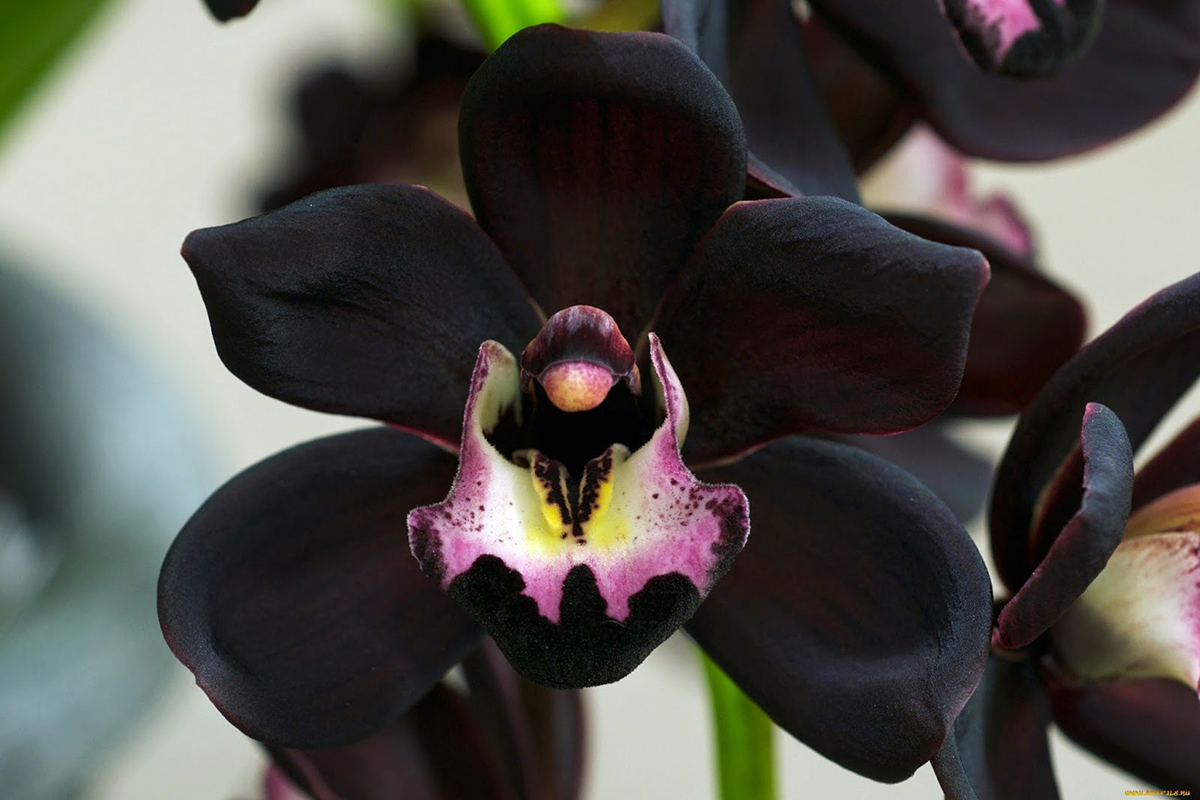
Black orchids, with their enigmatic allure and captivating beauty, have long captured the imagination of botanists, horticulturalists, and flower enthusiasts alike. These unique and rare blooms have a rich history and require specialized care to thrive in our gardens and homes.
History of Black Orchids
Black orchids have a mystical and mysterious aura that has fascinated people for centuries. While true black orchids do not exist in nature, certain orchid species possess deep, dark shades that appear almost black, adding to their allure. One of the most famous black orchids is the Coelogyne pandurata, also known as the Black Orchid of Malaysia. Discovered in the 19th century, it became an object of desire for collectors and orchid enthusiasts worldwide.
Another notable example is the Dracula vampira orchid, named after the infamous vampire from literature. Native to Ecuador, this orchid displays a deep maroon or brown coloration, resembling the dark essence of its namesake. The Dracula vampira became a symbol of the fascination and allure associated with black orchids.
Caring for Black Orchids
Cultivating black orchids requires careful attention to their specific needs. While the requirements may vary slightly depending on the species, here are some general care guidelines to help your black orchids thrive:
Light Requirements
Black orchids generally prefer bright, indirect light. Place them near a north or east-facing window where they can receive adequate light without direct exposure to harsh sunlight. However, it’s important to note that each species may have different light preferences, so research the specific requirements of your orchid to ensure proper care.
Temperature and Humidity
Most black orchids thrive in warm to intermediate temperatures, typically between 60°F and 80°F during the day, with a slight drop at night. Additionally, maintaining humidity levels between 50% and 70% can significantly benefit these delicate plants. Consider using a humidifier or placing a tray of water near the orchid to increase humidity.
Watering and Feeding
Water them thoroughly, allowing the potting medium to dry slightly between waterings. Avoid overwatering, as excessive moisture can lead to root rot. It’s advisable to use filtered or rainwater to prevent the accumulation of minerals that can harm the orchid. Additionally, feed your orchid with a balanced orchid fertilizer diluted according to the instructions on the package, applying it every two weeks during the growing season.
Potting and Repotting
Black orchids prefer well-draining potting media, such as a mixture of orchid bark, sphagnum moss, and perlite. Re-pot your orchid every two years or when you notice overcrowding or a decline in its health. Be gentle when handling the delicate roots to avoid damage.
Disease and Pest Control
Regularly inspect your black orchid for signs of pests like mealybugs, aphids, or spider mites. If detected, treat them promptly using appropriate insecticides or by using natural pest control methods. Ensure good air circulation around the plant to prevent the development of fungal or bacterial diseases.
Black orchids are undoubtedly captivating and hold a special place in the world of flowers. While true black orchids may be rare, the deep, dark hues exhibited by certain orchid species have captured our imagination and desire for centuries. By understanding the historical significance and following the essential care guidelines outlined in this article, you can successfully cultivate and enjoy the can successfully cultivate and enjoy the beauty of these exotic blooms in your own garden or home.
6 Fun Facts About Black Orchids
Symbolism and Rarity
Black orchids are often associated with rarity, elegance, and power. Their unique and enigmatic beauty has made them a symbol of luxury and sophistication. Due to their elusive nature, they have also been associated with secrets and hidden meanings.
Hybridization
Many black orchids available in the market are hybrid varieties. Orchid enthusiasts and breeders have crossed different orchid species to create hybrids that exhibit darker pigmentation, including shades of black. These hybrids allow enthusiasts to enjoy the allure of black orchids in their collections.
Color Enhancement
Some orchid growers employ techniques such as shading or exposure to low light levels to intensify the pigmentation of black orchids. By carefully manipulating light conditions, they can enhance the deep, dark coloration of these unique blooms.
Popularity in Art and Culture
Black orchids have not only captivated horticultural enthusiasts but also found their way into various art forms and cultural references. They have been depicted in paintings, sculptures, and even feature prominently in literature, where they often symbolize mystery, seduction, and the unknown.
Native Orchids
While black orchids are cultivated and admired worldwide, some species of orchids native to different regions exhibit dark pigmentation. For example, the Dracula vampira orchid, native to Ecuador, showcases deep maroon or brown coloration, resembling its mythical namesake.
Black Orchid Fragrance
Apart from their striking appearance, some black orchids also emit a captivating fragrance. For example, the popular hybrid Black Orchid (Prosthechea cochleata x Prosthechea prismatocarpa) is known for its delightful scent reminiscent of chocolate or vanilla.
Related Articles & Free Email Newsletter Sign Up
How to Select the Best Orchid Fertilizer
How to Use the Sphag-n-Bag Recovery Method for Damaged Orchids




Comment here